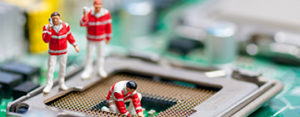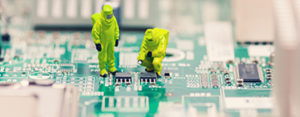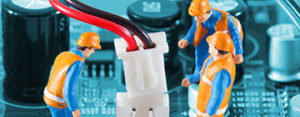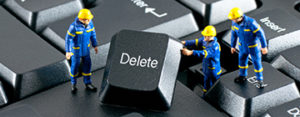Today I went to an address in Impington, Cambridge to assist a nice old lady who was having problems with her computer running slowly. An initial diagnosis took just a few minutes and I track the slowness down to a failing hard drive. I brought the laptop back to the workshop and successfully cloned the hard drive onto a brand new solid state drive. After running through our standard cleanup routines and checking for malware, the computer ran a lot faster.
Most hard drives are what we call “spinners”, a bit like an old fashioned record player, in which a magnetically coated disk is spun around 5400rpm and a head floats about a micron above the surface to read the data. This is a relatively slow process as the computer is relying on a mechanical process to move the head to the correct place on the disk and also wait for the disk to spin round to find the data. The newer solid state drives (known as SSD) are a lot quicker as they contain only memory chips so most computers will be ready to use approximately a minute after turning them on, as opposed to the old hard drives which take between five and fifteen minutes. The other advantages are that solid state drives are silent in operation, use less power and are also immune to knocks and bumps.







